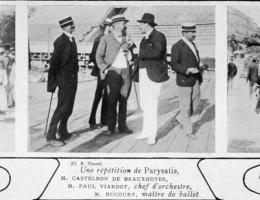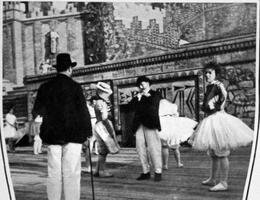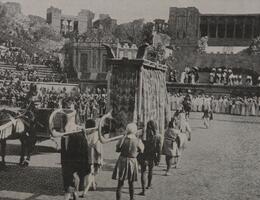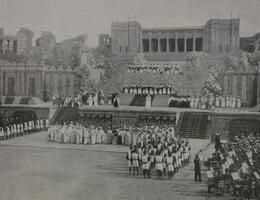Parysatis
Incidental music, choruses and ballet for the drama Parysatis, consisting of a prologue and three acts, to a libretto by Jane Dieulafoy (1851-1916); premièred on 17 August 1902 at the Théâtre des Arènes in Béziers.
In 1890 the writer, journalist and archaeologist Jane Dieulafoy had written a novel entitled Parysatis, which later, at the request of Camille Saint-Saëns, she turned into a play (in a prologue and three acts) focusing on the Persian queen Parysatis, (fl. 440-385 BCE), the mother of Artaxerxes II and Cyrus. Saint-Saëns worked on the score during a stay in Egypt between January and April 1902. He composed the work for the Béziers summer festival, held in the city at the Théâtre des Arènes, where the work was premiered on 17 August 1902, with Paul Viardot (1857-1941) conducting. The musical line-up was colossal, with 450 instrumentalists (including two wind bands, twenty harps and seventeen hunting horns), a 250-strong mixed choir and sixty dancers. All the characters – except the three Choryphées (two sopranos and a tenor) and the choir – have spoken roles. Clearly anxious to evoke Middle Eastern music in his score, Saint-Saëns, drawing inspiration in particular from early iconographic sources, used a specific instrumentarium consisting of flutes, harps and various percussion instruments, and he also made use of modal writing, augmented seconds and frenzied rhythms. “Le rossignol et la rose”, for coloratura soprano, imitating the song of the nightingale, has been recorded several times, as have the four “Airs de ballet” from Act II, which are often presented as orchestral concert pieces.




